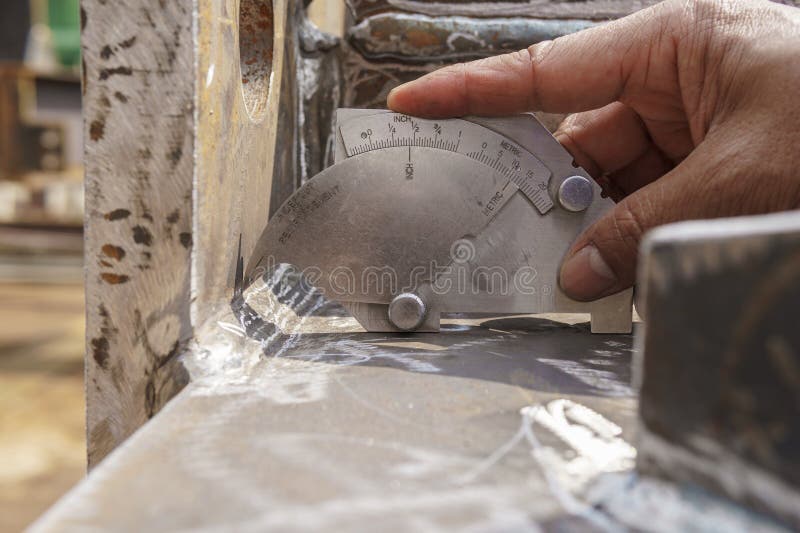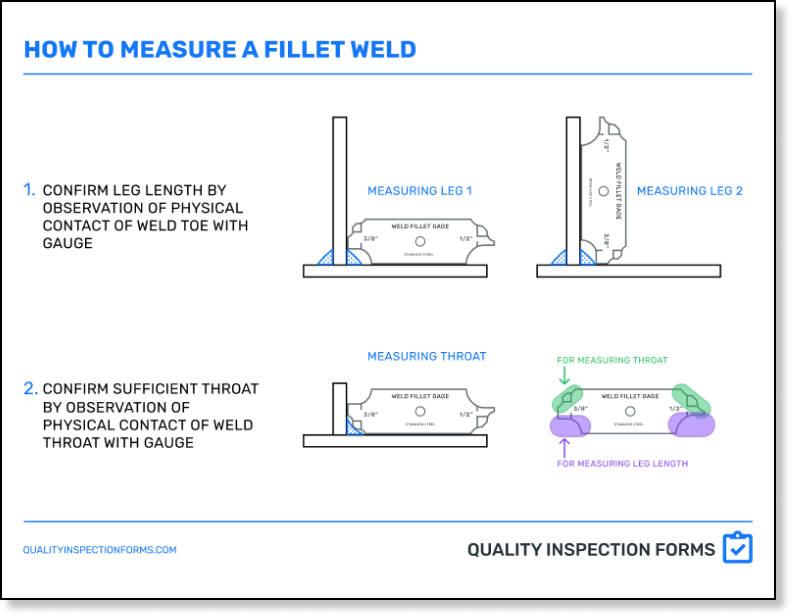Checking Out the Advantages of Fillet Welding in Construction: Cost-efficient Solutions for Diverse Industries
In the realm of construction, the use of fillet welding provides an engaging suggestion for sectors looking for economical solutions without jeopardizing structural honesty. The benefits of fillet welding prolong beyond mere economic cost savings to include enhanced architectural efficiency, versatility throughout varied commercial applications, and the guarantee of premium toughness and resilience. As we navigate through the sensible benefits that fillet welding offers, a deeper understanding arises of exactly how this welding technique can revolutionize manufacture processes across numerous markets.

Economical Remedy for Manufacture
Fillet welding functions as a cost-efficient remedy in manufacture processes, supplying both performance and toughness. This welding technique entails joining two items of steel at an angle, creating a triangular cross-section. The simplicity of fillet welding makes it a popular selection in various markets, consisting of building, auto, and manufacturing.
One of the crucial benefits of fillet welding is its ability to reduce product and labor prices. By utilizing fillet welds rather than various other complex joint styles, makers can save money on materials and manufacturing time. In addition, fillet welding needs very little prep work contrasted to other welding techniques, even more reducing manufacture prices.
In addition, fillet welds supply excellent structural strength, making sure the longevity and sturdiness of the produced elements. The triangular form of the weld disperses tension much more uniformly, decreasing the probability of joint failure (Gauge Fillet Weld). This architectural honesty not just improves the total quality of the finished item yet additionally reduces repair and maintenance expenses in the future
Improved Structural Effectiveness With Fillet Welding
Enhancing structural efficiency through the application of fillet welding strategies is a vital element of making sure ideal performance and durability in fabricated structures. Fillet welding plays a key duty in improving structural effectiveness by effectively dispersing tons and tensions throughout the bonded joints. By developing a smooth shift between the linked elements, fillet welds help to improve the total stamina and stability of the framework.
One of the considerable benefits of fillet welding in improving structural performance is its capability to sign up with materials of differing thicknesses. This adaptability permits the building and construction of lightweight frameworks without jeopardizing on toughness. Furthermore, the smooth account of fillet welds minimizes anxiety concentrations, which can aid stop premature failure of the bonded joints.
Moreover, fillet welding enables the manufacture of complex geometries effortlessly, giving developers with more flexibility in developing effective and cutting-edge structures. By maximizing the design and positioning of fillet welds, designers can optimize the structural effectiveness of fabricated elements, ultimately causing set you back savings and enhanced performance in varied industries.
Flexibility in Diverse Market Applications
With its capacity to cater to a wide array of material densities and geometric complexities, fillet welding stands as a functional construction technique that locates applications throughout diverse sectors. Furthermore, the aerospace sector counts on fillet welding for the manufacture of aircraft parts, making sure strength and longevity in vital parts. Generally, the flexibility of fillet welding makes it an essential procedure in different sectors, providing cost-efficient services for intricate fabrication demands.

Superior Stamina and Longevity
When taking into consideration welding methods for producing frameworks that need exceptional durability and durability, the focus shifts in the direction of methods that can regularly deliver superior toughness and toughness. Fillet welding plays a vital role in attaining these attributes due to its capacity to give substantial toughness by distributing loads uniformly across the welded joint. This welding strategy produces a triangular cross-section that enhances the weld's resistance to different kinds of anxiety, consisting of compression, tension, and shear pressures. As a result, frameworks produced making use of fillet welds show boosted longevity and can stand up to significant mechanical pressures without compromising their integrity - Gauge Fillet Weld.
The remarkable strength and toughness supplied by fillet welding make it an excellent selection for applications in industries such as building and construction, vehicle, aerospace, and manufacturing, where architectural stability is paramount. By utilizing fillet welds in construction, engineers and manufacturers can make certain that their items meet rigid high quality and safety and security requirements while enhancing cost-effectiveness and manufacturing performance. In essence, the phenomenal strength and long life offered by fillet welding make it a preferred welding strategy for producing durable and robust frameworks find this throughout diverse industries.
Practical Advantages of Fillet Welding
Provided the shown exceptional stamina and longevity in bonded joints, the functional advantages of fillet welding prolong beyond structural integrity to incorporate effectiveness and cost-effectiveness in fabrication procedures. One vital sensible benefit is the simpleness of fillet welds, which do not call for intricate or expensive devices to produce. This simplicity converts right into time cost savings during fabrication, as fillet welding can be quickly applied in various positions without the need for elaborate configurations. Furthermore, fillet welding allows for boosted efficiency because of its adaptability in joining various kinds of thicknesses, forms, and products. The versatility of fillet welds makes them appropriate for a vast array of applications throughout diverse sectors, further contributing to cost-effectiveness in producing processes. The reduced requirement for substantial surface preparation contrasted to various other welding methods lessens material waste and lowers production downtime. In general, the functional benefits of fillet welding make it a valuable selection for firms seeking cost-effective and efficient services in construction.
Conclusion
Finally, fillet welding provides a cost-efficient remedy for manufacture, providing enhanced structural efficiency, investigate this site versatility in varied sector applications, premium strength, and sturdiness. The useful benefits of fillet welding make it a recommended selection for numerous manufacture jobs across different sectors. Its capacity to efficiently sign up with products while preserving structural integrity makes it a beneficial method for making certain high-grade and dependable lead to welding applications.

Additionally, fillet welding calls for marginal prep work compared to various other welding techniques, even more reducing construction expenses.

Given the shown superior stamina and resilience check here in bonded joints, the useful advantages of fillet welding expand past structural integrity to encompass efficiency and cost-effectiveness in construction processes - Gauge Fillet Weld.In verdict, fillet welding offers a cost-effective option for fabrication, offering boosted architectural efficiency, adaptability in diverse sector applications, superior stamina, and longevity
Comments on “Recognizing Gauge Fillet Weld: A Comprehensive Guide for Welders”